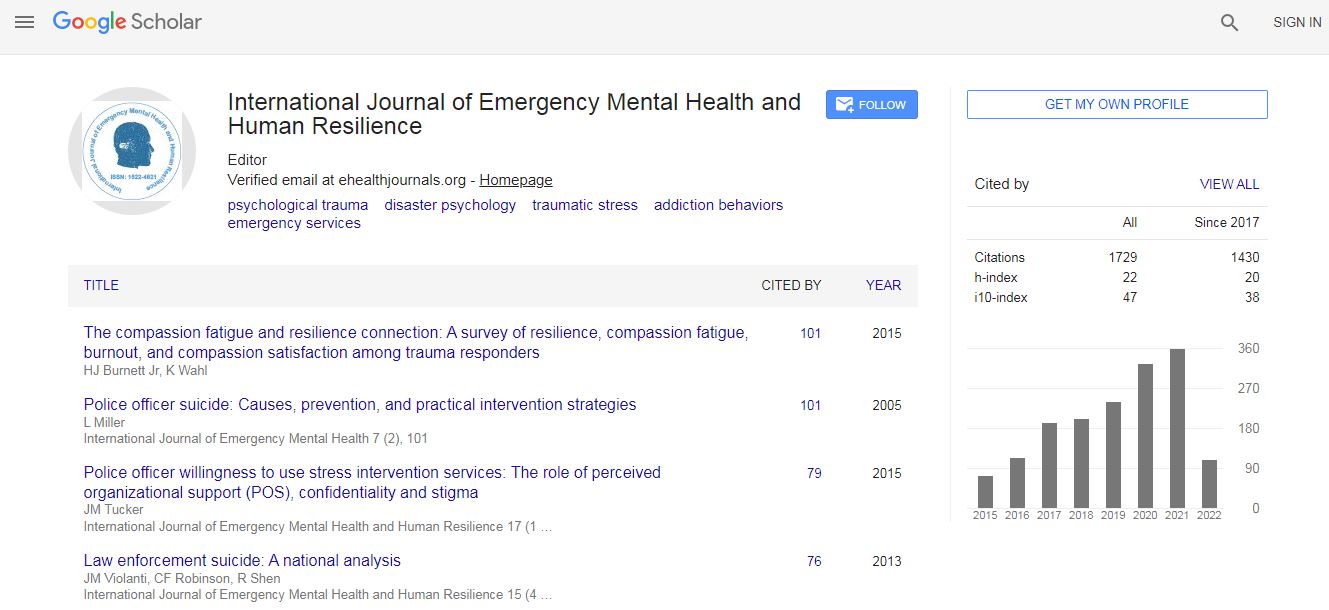Our Group organises 3000+ Global Conferenceseries Events every year across USA, Europe & Asia with support from 1000 more scientific Societies and Publishes 700+ Open Access Journals which contains over 50000 eminent personalities, reputed scientists as editorial board members.
Open Access Journals gaining more Readers and Citations
700 Journals and 15,000,000 Readers Each Journal is getting 25,000+ Readers
Google Scholar citation report
Citations : 4948
Indexed In
- Index Copernicus
- Google Scholar
- CiteFactor
- Publons
- Pubmed
- science Gate
- scispace
- world cat
Useful Links
Related Subjects
Share This Page
The THINK-FEEL-DO thermostat model: A simple but helpful visual to use with patients and clients to help them generate a more functional amount of emotion and be more responseable
Joint Event on World Summit on Psychiatry, Mental Health Nursing and Healthcare & International Conference on Applied Psychology, Psychiatry and Mental Health
Ray Mathis
Chicago Institute for Rational Emotive Behavior Therapy, USA
ScientificTracks Abstracts: Int J Emerg Ment Health
Abstract
They say a picture is worth a thousand words. That’s what makes the THINK-FEEL-DO thermostat model so helpful. It’s based on the work of Dr Albert Ellis. He identified four basic types of irrational thinking: demandingness, awfulizing, can’t stand it-itis and labeling and damning. the mistake people make is to start thinking they need things they simply want, treating simple preferences as necessities and demand what they simply desire. This creates a much bigger gap between their expectations and reality if they don’t get what they want, lose it, or imagine doing either. This makes the perceived threat bigger than it is or needs to be and triggers more emotion than is helpful or necessary. That causes people to become reactive and less response-able, or less able to respond to life in the best ways. Many things in life are unpleasant, inconvenient and uncomfortable. By thinking we need things we simply want and demanding what we simply desire, we’re more likely to see not getting it or losing it as awful and think we can’t stand it, rather than simply not liking it. This contributes to generating more emotion than is helpful or necessary. We’re also more likely to label and damn a person rather than simply dislike their behavior. The THINK-FEEL-DO thermostat visual allows people to assess quickly where they are emotionally and behaviorally, why they are there in terms of their cognition, where they might want to be instead emotionally and behaviorally and what it will take cognitively to get there. People can be taught simple ways to turn their thermostat down and ultimately keep it down more often, or turn it down quickly should it go up. We can create multiple variations of this simple visual, depending on what emotional issue someone is struggling with.Biography
Ray Mathis was a health education teacher for 33 years. He recognized early that the real problem was his students generated too much emotion in their lives. It’s why he became trained in Rational Emotive Behavior Therapy (REBT) and Education (REBE). He developed the “Mental and Emotional Tool Kit for Life” for his students. Since retiring from the classroom, he has represented the Chicago Institute for REBT and spoken to teachers and students in school and universities and at state and national conventions to advocate for teaching the “tools” to all our teachers and students and parents if possible. He believes the “tools” would be a major ounce of prevention worth many pounds of cures for so many of the mental health and other problems both young and older people so often struggle with. Like Dr Albert Ellis, he believes therapy should be educational and education can be very therapeutic.
E-mail: naturesmasterpieces@yahoo.com

 Spanish
Spanish  Chinese
Chinese  Russian
Russian  German
German  French
French  Japanese
Japanese  Portuguese
Portuguese  Hindi
Hindi 